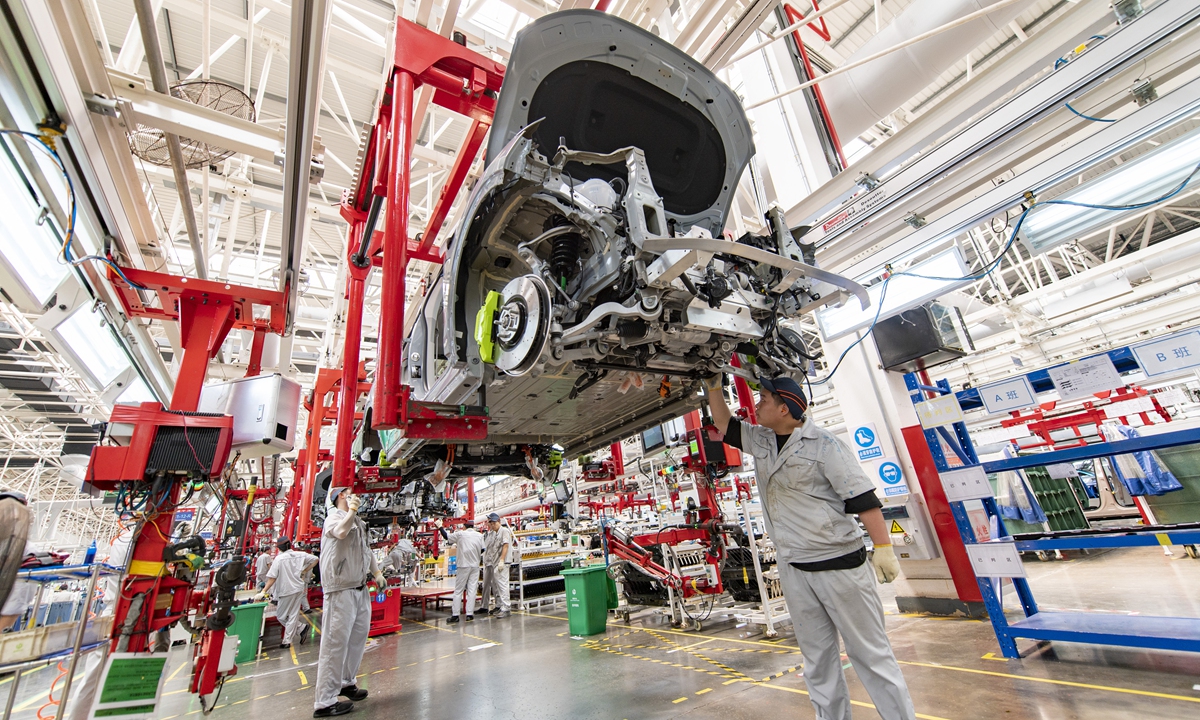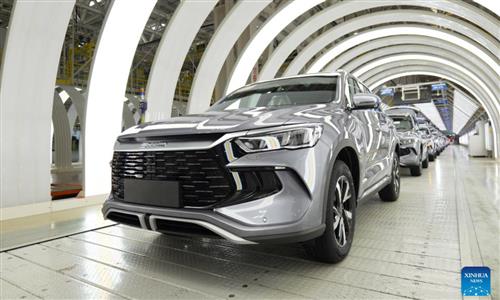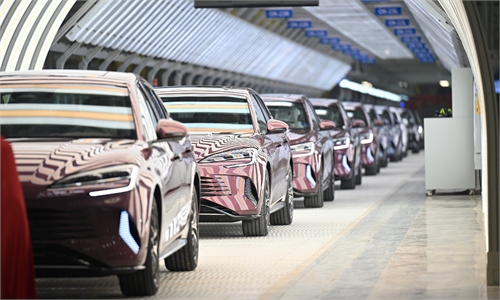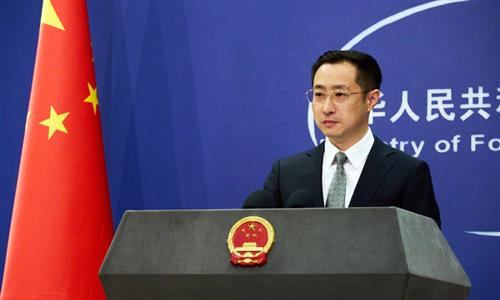China’s NEV exports in Q1 grow 43.9% y-o-y, continuously expanding overseas influence: CAAM data

Workers are busy at a production line of new-energy vehicles (NEVs) in Jinhua, East China's Zhejiang Province on July 2, 2024. The volume of NEV production is rising driven by growing demand. Zhejiang is striving to produce more than 1.2 million NEVs annually, or more than 60 percent of the province's total automobile production, by 2025, and its NEV output will account for about 10 percent of the country's total. Photo: VCG
In the first quarter of 2025, China's exports of new-energy vehicles (NEVs) recorded a year-on-year increase of 43.9 percent to 441,000 units, continuing the growing momentum and showing an expanding global influence, according to data released by the China Association of Automobile Manufacturers (CAAM) on Friday.
Automobile production grew by 14.5 percent to 7.561 million units, while sales totaled 7.47 million units, up 11.2 percent. Among the figures, the production of NEVs surged 50.4 percent year-on-year to 3.182 million units, while sales increased by 47.1 percent to 3.075 million units. Sales of NEVs reached 41.2 percent of the total new sales.
Since the beginning of this year, China's economy has maintained an overall expansion, with accelerated release in both the production and demand sides. In the first quarter, a series of policies and measures aimed at stimulating automobile consumption was extended and accelerated in implementation, leading to quality improvement and positive momentum in the consumer market, intensive rollout of product upgrades by enterprises, and enhanced consumer confidence, CAAM said in a report on its official WeChat account.
China's export advantage lies in its possession of the world's largest automotive NEV supply chain, which ensures stable quality and lower costs for Chinese vehicles and provides them with pricing advantages and high cost-effectiveness in international markets, Zhang Xiang, director of the Digital Automotive International Cooperation Research Center of the World Digital Economy Forum, told the Global Times on Friday.
Zhang noted that leading Chinese automakers are developing rapidly, investing heavily in research and development, and frequently launching new models. All these factors benefit China's exports, as stronger vehicle competitiveness drives robust sales in overseas markets.
When it comes to emerging markets for Chinese auto exports, Zhang pointed to regions including Russia, Southeast Asia, South America, Africa, and the Middle East as the primary destinations. He added that the EU could also become a potential growth market if its high tariff policies start to shift.
Looking ahead to the second quarter, the combined effects of relevant policies will continue to unfold. The Shanghai International Automobile Industry Exhibition 2025, which is set to be held from April 25 to May 2, will kick off an intensive product launch cycle, and promotional campaigns are in full swing across multiple regions. These factors will help further unleash consumer potential and sustain the market's growth momentum, per the report.
Meanwhile, the report cited the complicated external environment and operating pressure as challenges facing the industry, vowing to cope with them by closely monitoring the external changes and implementing targeted policies to boost domestic demand.



